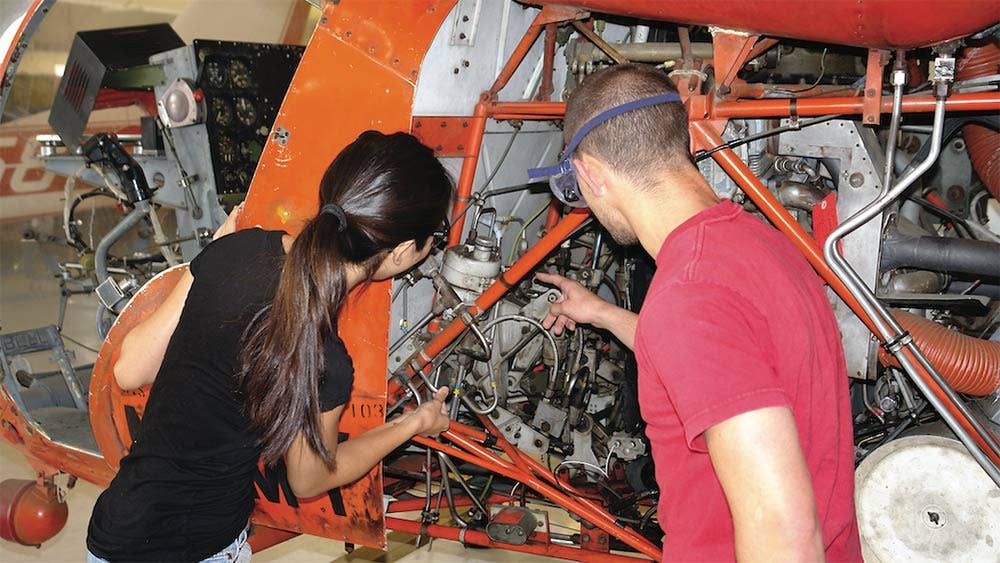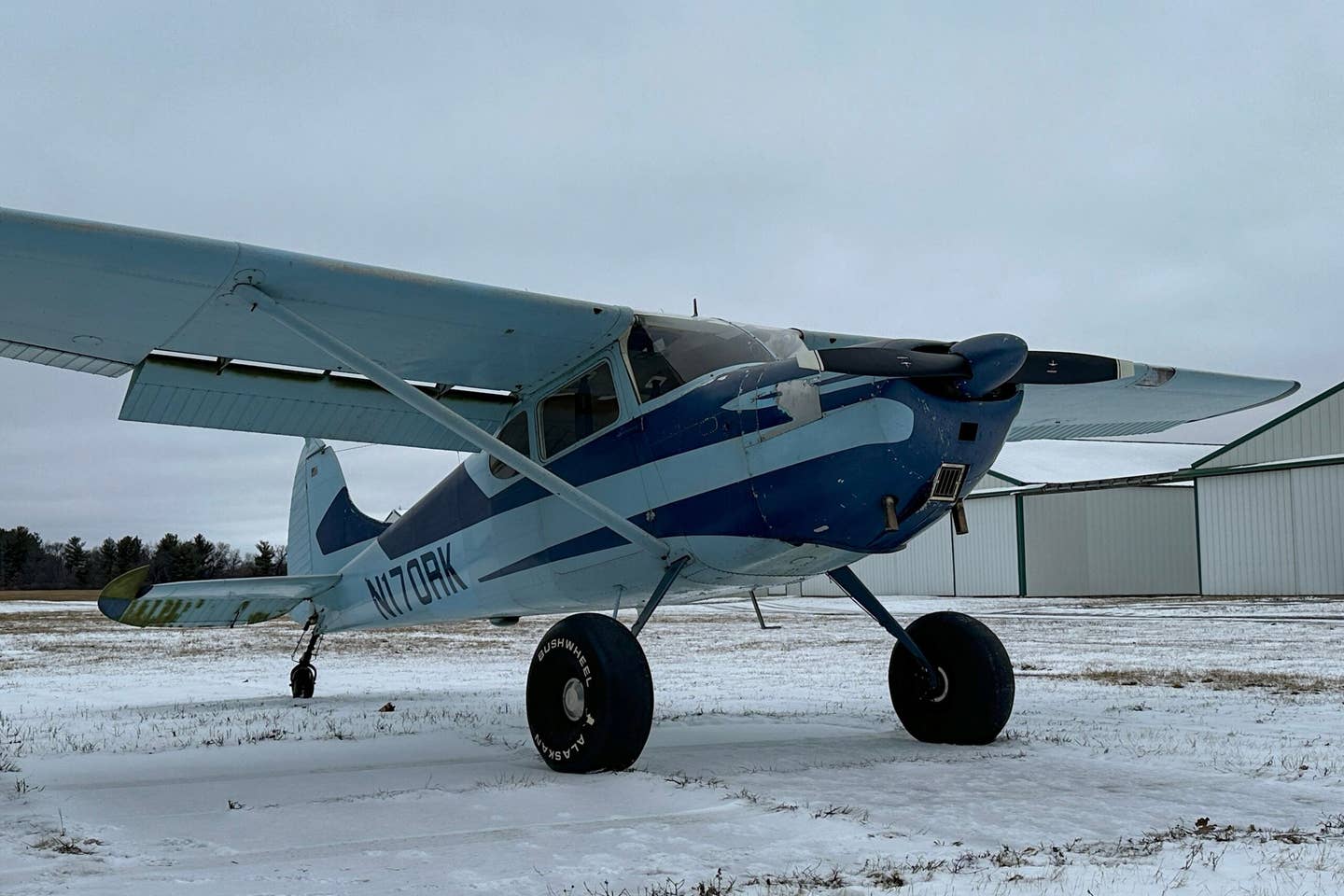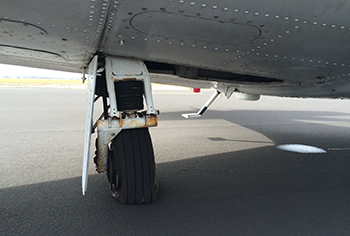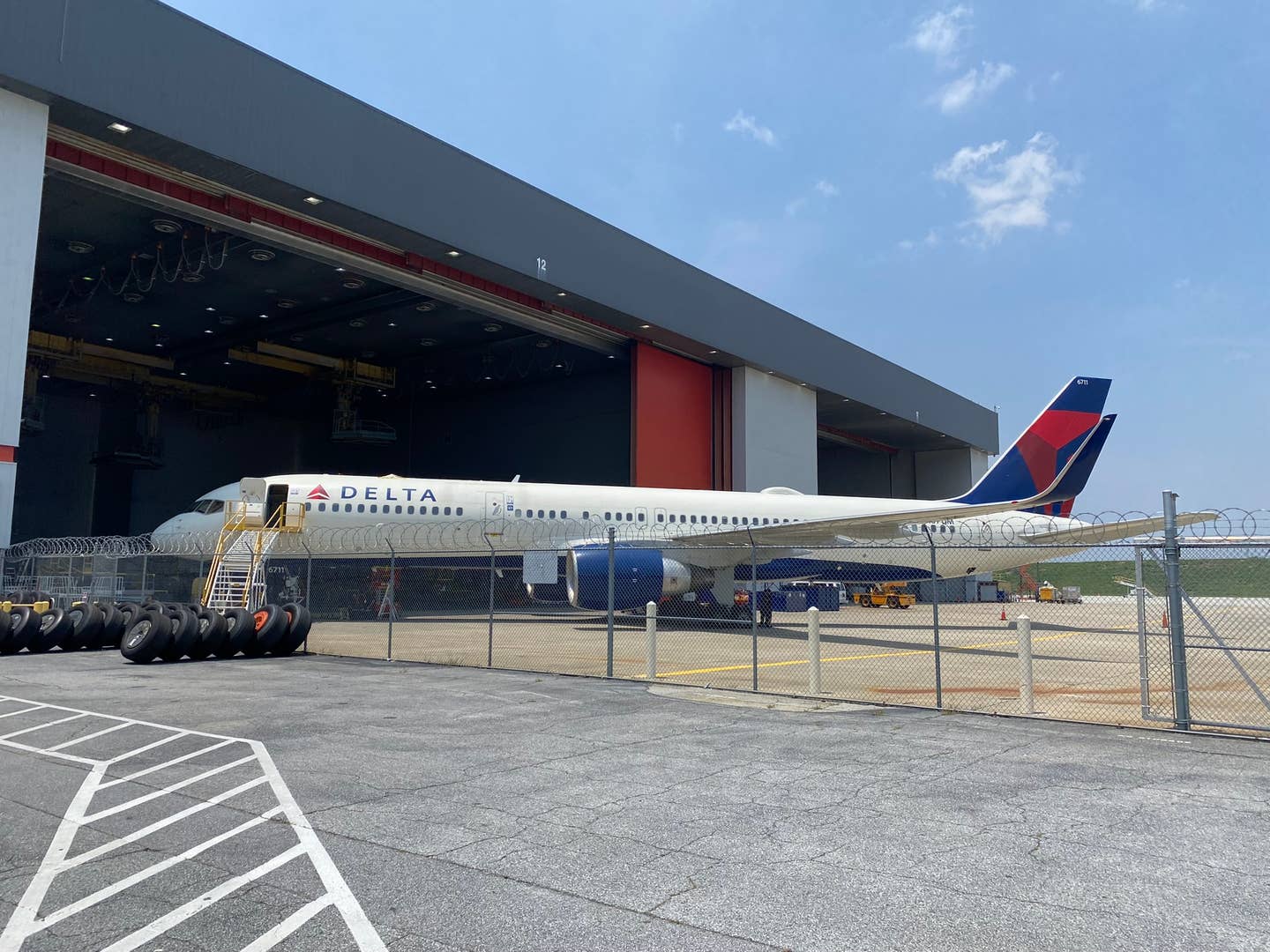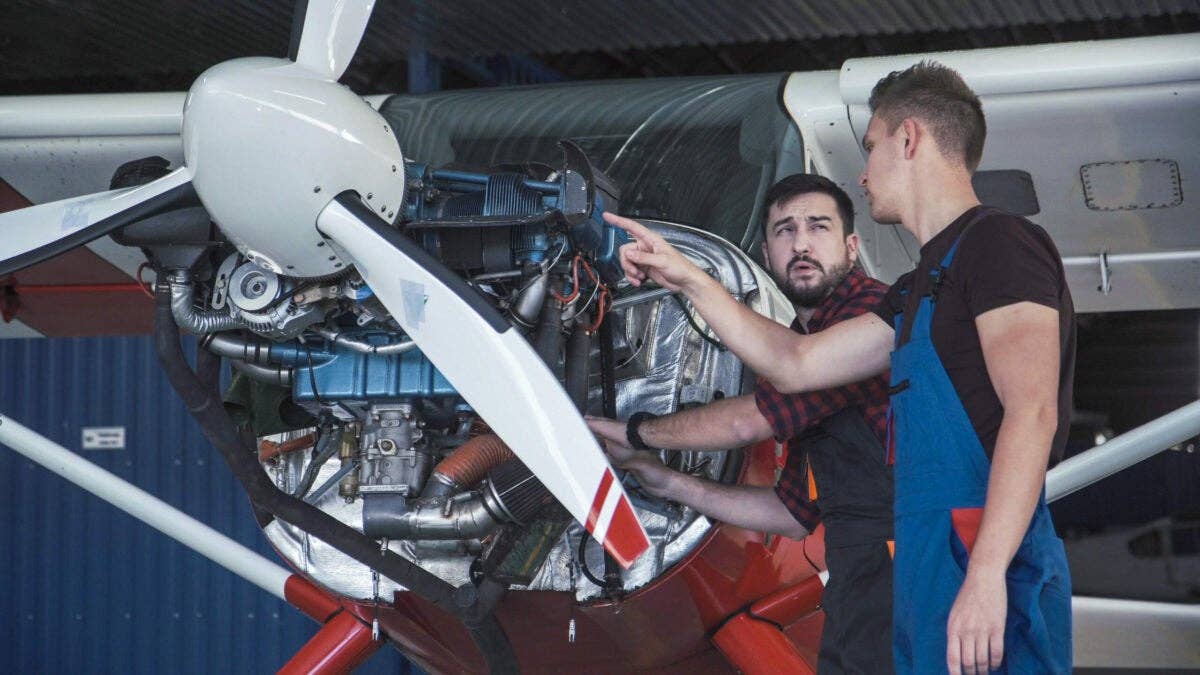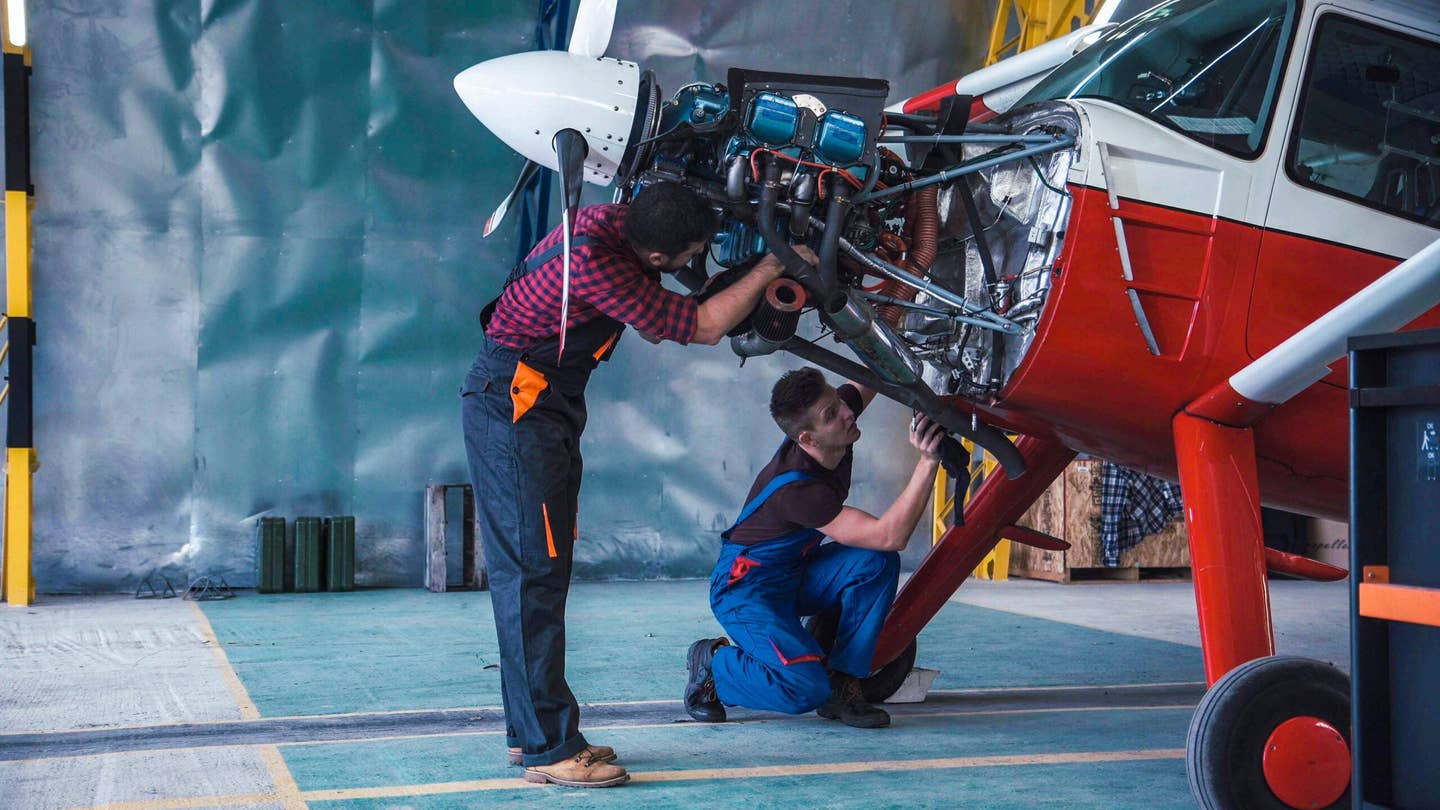How Much Can I Work on My Airplane? It Depends
Certificated, experimental, and homebuilt aircraft each have their own sets of rules and regulations for maintenance. Here’s what you need to know.
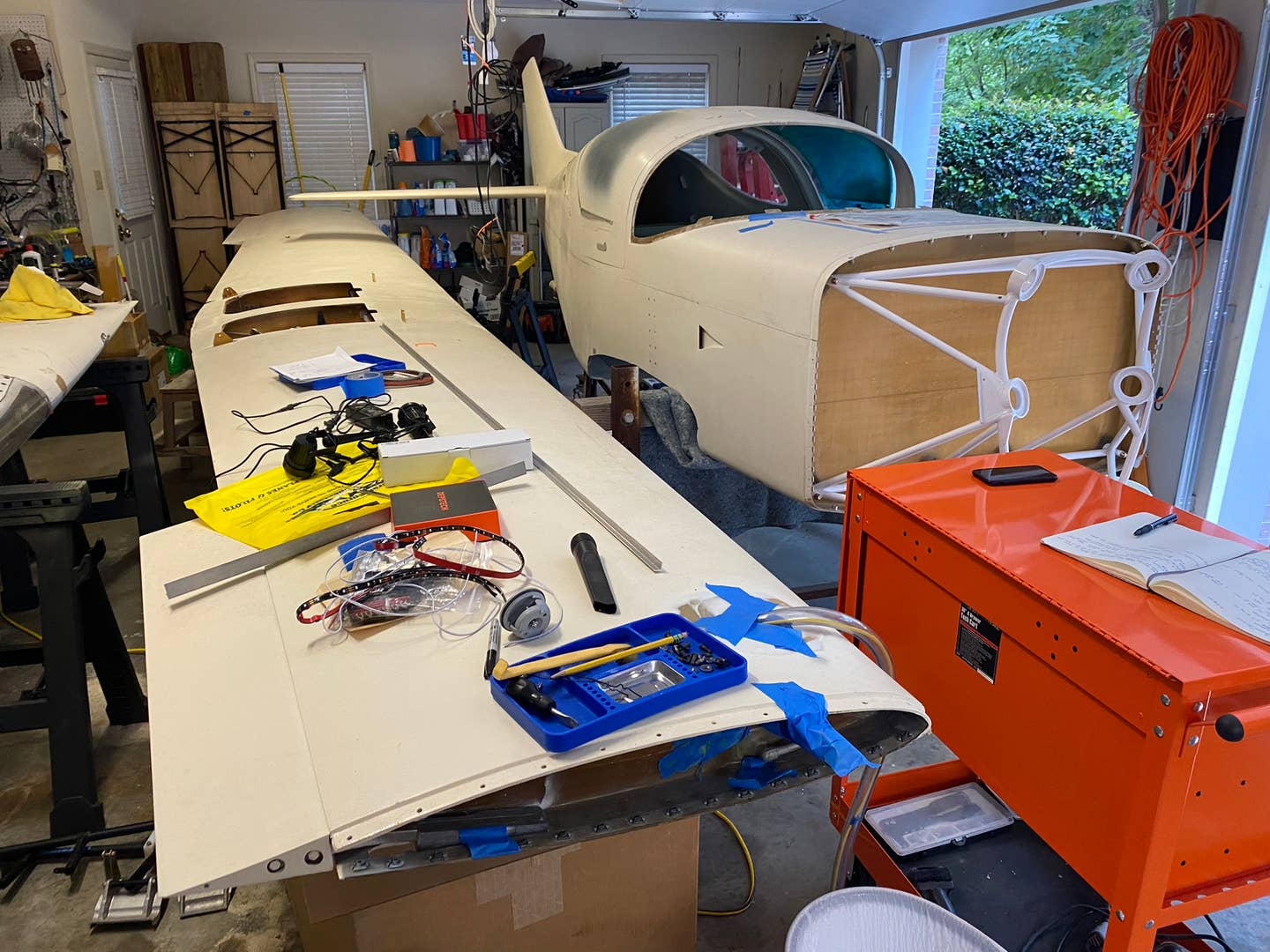
When it comes to homebuilt aircraft, the field is as varied as any other aviation sector. [Photo: Richard Scarbrough]
Have you ever dreamed of owning an airplane? Those who achieve that dream now enjoy the freedom of the skies. When I had my engine shop, one of my employees flew a Mooney to work. I remember taking it on a sales call to Epps Aviation at KPDK and soaring over the gridlock traffic on the 75/85 connector. How about building one in your garage? What are you allowed to work on and sign off when it’s finished? Do you know the 51-percent rule?
Let’s tackle the ins and outs of certificated, experimental, and homebuilt aircraft maintenance. Many aircraft lined up on the ramp operate under different rules, with their own set of regulations and nuances. Don’t get caught on the wrong side of the law when the Feds come calling.
Jeff Arinder, based at Atlanta Regional Airport at Falcon Field (KFFC) in Peachtree City, Georgia, is an owner or part-owner of three separate aircraft. Each of his airplanes carries a different set of rules for maintenance than the others.
Remember, in aircraft maintenance almost everyone follows the same working logic. Right is tight, and left is usually loose, except for certain circumstances. You always want to install bolts with the head forward or on top, bend your cotter pins not to exceed the perimeter, and snug it up just enough, but not too much.
Typically, the differences you find with these aircraft are in the record-keeping, documentation, and return to service. How are they different? What to do and not do. And so we begin the tale of three aircraft. Please move to the center of the vehicle and away from the doors; this train is departing.
1974 Beech Bonanza F33A
As a type-certificated aircraft, Jeff’s Bonanza adheres to the guidelines outlined in the Code of Federal Regulations (CFR) Title 14, entitled Aeronautics and Space. The FAA holds the mandate to implement, oversee, and enforce 14 CFR Part 43.
Part 43 covers maintenance, preventive maintenance, rebuilding, and alteration of type-certificated aircraft. Part 43 permits a certified pilot to perform specific preventive maintenance on the aircraft owned or operated by the pilot. However, this rule does not apply to aircraft operating under Part 121, 127, 129, or 135.
That is a lot of legal jargon, but what does it mean? General aviation maintenance falls into two classifications, scheduled and unscheduled maintenance. The preventive maintenance mentioned above is that of scheduled maintenance.
The FAA’s advisory circular (AC) 43-12A provides information concerning preventive maintenance, including who may perform it, the standards of performance applicable to it, authority for approval for return to service, and the applicable recording requirements.
Appendix A to Part 43, subpart c, provides a list of preventive actions, with the understanding that it does not involve complex assembly operations. Some of the items on the list may surprise you. There are several that I took an interest in, including 5) Replacing defective safety wiring or cotter keys. That is good because I’m not too fond of safety wire work and almost always stab myself. Now I can tell the pilot to finish the safety wire.
This Beech Bonanza is equipped with a 300 hp Continental IO-550-B and a supplemental type certificate (STC) to run GAMI injectors in the FAA-PMA Superior Millennium cylinders. The maintenance plan must follow Beechcraft guidelines and Superior’s technical documents and General Aviation Modifications Inc. Document No. 01-6590001, Revision IR, as well. Don’t forget about the McCauley propeller—it also requires service. You will learn quickly that an airframe and powerplant (A&P) mechanic must maintain a robust technical publications library.
Any additional unscheduled repairs, inspections, and major maintenance need to be accomplished by an A&P mechanic. The annual inspection must be performed by an A&P with inspection authorization (IA).
2012 Glasair GlaStar GS1
Glasair Aviation arrived on the scene in 1980 and introduced the world’s first pre-molded composite kit for an experimental home build. The modular design of the kits won praise from the homebuilder community as both a time saver and a more manageable alternative, as opposed to fabricating every piece of the aircraft by hand. The company estimates they have 2,500 kits in the field worldwide and 1,200 aircraft actively flying. This number demonstrates a robust demand for the product, and it also tells us that some owners need to get to work and finish their build.
Jeff’s model is a 2012 Glasair GlaStar GS1, powered by a 150 hp Textron Lycoming O-320-E3D. Introduced at Sun ‘n Fun in Lakeland, Florida, in 1994, the GlaStar impressed the experimental market with its versatility, adaptability, and performance. Because the GlaStar is an experimental amateur-built aircraft, it does not have to adhere to Part 43. What does that mean to Jeff, the owner-operator? It means he can perform all of the maintenance on this aircraft.
Several tools help with this endeavor, and minimal oversight from the FAA does not give owners carte blanche to trick out their aircraft in any way they see fit. Can’t you see a Van’s Aircraft RV-10 rollin’ on 20-inch tires? Safety, common sense, and airworthiness are still the law of the land and the skies. Many clubs and interest groups offer a place to virtually gather, share resources, swap tall tales, and join as a community. In a post, Omar Filipovic, president of the Glasair Aircraft Owners Association, offers a condition inspection checklist for the GlaStar. What is a condition inspection, you ask? Good question; keep reading. We are getting to that.
For the powerplant, actual certificated data is available to assist experimental aircraft owners in maintenance practices. Lycoming publishes its O-320 Operator’s Manual online and offers several great resources pro bono. Do you remember my article on Illustrated Parts Catalogs (IPC)? Good, because Lycoming also has an IPC to reference if engine work is warranted.
Now, I do not recommend tackling engine work on your own. I don’t care how sweet your Chevy Chevelle was at Shermer High School back in ’85. That said, make sure if you enlist the help of an A&P that they have done more than just pulling compression over the past few years. Splitting the crankcase is a big deal, and Murphy loves to cruise by the hangar and hear, “ah, that should be good enough.” Please find a local engine shop you can trust and at least consult with them—trust me on this one.
We mentioned above that Jeff was the owner-operator of this GlaStar; therefore, he can perform the maintenance. He is not, however, the aircraft builder; someone else is. Jeff purchased this airplane in flying condition, so he cannot return it to service after the condition inspection. Condition inspection? Yes, I know; we are getting to that.
1995 Glasair Super II-S
And now, ladies and gentlemen, we come to the fun part of the program—the great American dream for aviation types. Yes, I speak of building an airplane and unlocking the freedoms that accompany it. Creating something from nothing, filling the void in your life with a tangible asset, let there be aileron, and there was aileron.
Now, when it comes to homebuilt aircraft, the field is as varied as any other aviation sector. Jeff stuck with the familiar when choosing a kit to build and selected a 1995 Glasair Super II-S. Looking for a change of pace, the Super II-S is a stretch version of the low-wing Super II—by 12 inches (30 cm)—and with a cruise speed of 221 mph (356 km/h, 192 knots) and a range of 1,750 mi (2,820 km, 1,520 nm), he can go farther, faster than his GlaStar’s cruise speed of 167 mph (269 km/h, 145 knots), and range of 1,440 miles (2,320 km, 1,250 nm).
Experimental aircraft also have operating limitations, and the Feds spell those out in FAR 91.319 Aircraft having experimental certificates: Operating limitations. And, yes, there is an AC 20-27G, Certification and Operation of Amateur-Built Aircraft, where they detail the 51-percent rule.
Did someone say condition inspection? While Part 43 aircraft require an IA to sign off on an inspection every year, a condition inspection requires only an A&P. Now, here is the cool part. The condition inspection is the experimental equivalent of a certificated aircraft’s annual inspection. If the owner can comply with the 51-percent rule, they are considered the builder and can accomplish the inspection themselves. They must apply for a Repairman Certificate with the FAA 8610-2 application.
There can only be one primary builder, and the title is not transferable. Holding a repairman certificate authorizes the builder to perform the condition inspection on their specific aircraft only, not any other like make or model.
Next Steps
Folks around the Southeast will recognize the name, Ron Alexander. I never had specific dealings with him personally, but there are two degrees of separation up and down the airfield. He penned an excellent article, “The Basics of Aircraft Building,” and has some valuable insights from one of the key figures in amateur-built aircraft.
The Feds also have a good resource entitled Maintenance Aspects of Owning your Own Aircraft. And when coupled with AC 20-106, Aircraft Inspection for the General Aviation Aircraft Owner, you can build your inspection checklist, or assist in the modification of an existing one.
As you can see, aircraft ownership is not for the faint of heart. Jeff has three aircraft and must maintain separate rules for each one. He does enlist the help of an A&P and welcomes that second set of eyes that is so important. If you cannot find a local mechanic, reach out to the local EAA chapter, they may have a contact for you.

Sign-up for newsletters & special offers!
Get the latest FLYING stories & special offers delivered directly to your inbox

